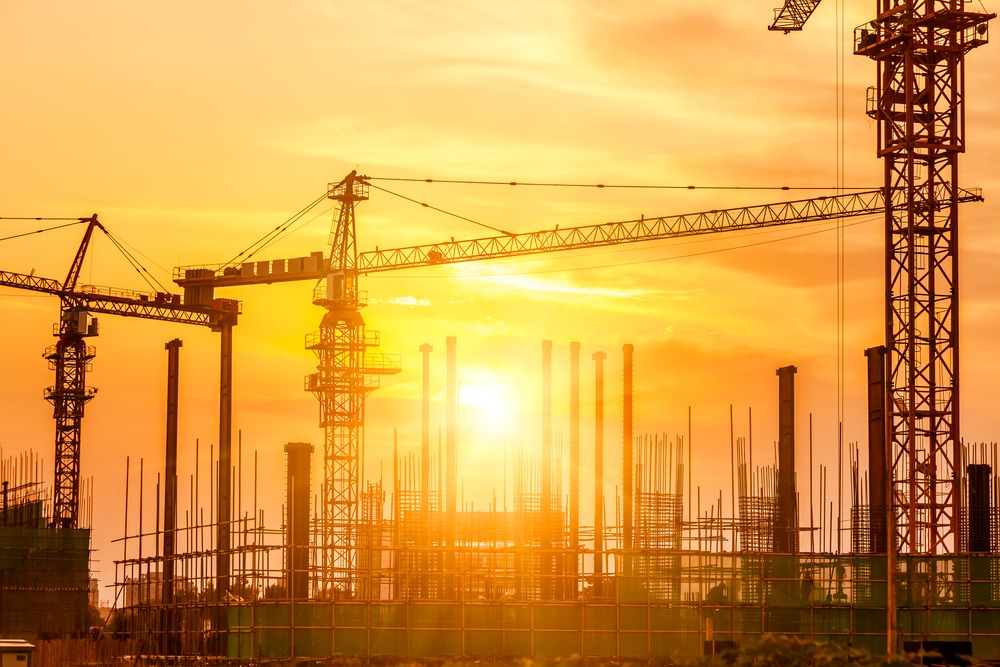BLOG
Scope of Cranes and Derricks in Construction Standard Clarified
- #Occupational Safety and Health
- #OSHA
- #Regulations
- #safety

OSHA releases interpretation letter clarifying the scope of the cranes and derricks in construction standard
In an interpretation letter dated July 14, 2016, the Occupational Safety and Health Administration (OSHA) further clarified the scope of the cranes and derricks in construction standard with answers to five questions. 1. An aerial lift that meets ANSI A92.2-1990 and is equipped with a hoist that is used to hoist, lower, and horizontally move a suspended load on a construction site is not regulated under the crane standard, provided that the loads being lifted are tools or lightweight materials related to the work being performed in the aerial bucket. However, the aerial lift would not meet the crane standard and should not be used to lift typical construction materials. 2. Equipment manufactured to both ANSI A92.2-1990 and ASME B30.5-2004 that is configured and used to hoist, lower, and horizontally: move a suspended load; or personnel in a boom-mounted platform may be used as cranes in addition to other functions. 3. When using dual-rated equipment, described in answer two as an aerial lift, employers must be able to ensure that any necessary computer programs and boom angle/load limiting devices are set and operating properly to prevent any failures that could occur when hoisting personnel. Heavier dual-rated equipment is also more likely to penetrate a surface beneath it compared to lighter aerial lift only designs, which requires employers to confirm that the structural integrity and stability of the equipment is adequate to support the anticipated loads of hoisting personnel.If these safety determinations are met, the crane standard rules do not apply.
However, some dual-rated equipment may need to be mechanically reconfigured to be used as an aerial lift. Because of the potential complexities, 29 CFR 1926.1431(a) allows cranes to be used as aerial lifts when it is infeasible to use other safe means to reach elevated positions. Although §1926.1431 would not apply to reconfigured, dual-rated aerial lifts, when compliance with the manufacturer’s procedures for reconfiguration is not effective for this purpose, the employer still must ensure that all industry-recognized, personnel-hoisting hazards are addressed each time an aerial lift has been mechanically reconfigured from being a crane prior to hoisting personnel.
4. To further clarify answer three, if there are aerial lifts and dual-rated equipment available on site, dual-rated equipment may be used to hoist personnel, if the employer has complied with all of the manufacturer’s procedures for reconfiguration and has confirmed that the aerial lift is set-up and safe to use.
5. When using either dual-rated equipment or equipment that meets the standards of to hoist personnel when conducting Subpart V work (electrical power transmission and distribution), both Subpart V and either the crane or aerial lift standard apply. Subpart V addresses the hazards present when using mechanical equipment during power distribution and transmission work, while the crane or aerial lift standard covers the general use of the equipment.
3. When using dual-rated equipment, described in answer two as an aerial lift, employers must be able to ensure that any necessary computer programs and boom angle/load limiting devices are set and operating properly to prevent any failures that could occur when hoisting personnel. Heavier dual-rated equipment is also more likely to penetrate a surface beneath it compared to lighter aerial lift only designs, which requires employers to confirm that the structural integrity and stability of the equipment is adequate to support the anticipated loads of hoisting personnel.If these safety determinations are met, the crane standard rules do not apply.
However, some dual-rated equipment may need to be mechanically reconfigured to be used as an aerial lift. Because of the potential complexities, 29 CFR 1926.1431(a) allows cranes to be used as aerial lifts when it is infeasible to use other safe means to reach elevated positions. Although §1926.1431 would not apply to reconfigured, dual-rated aerial lifts, when compliance with the manufacturer’s procedures for reconfiguration is not effective for this purpose, the employer still must ensure that all industry-recognized, personnel-hoisting hazards are addressed each time an aerial lift has been mechanically reconfigured from being a crane prior to hoisting personnel.
4. To further clarify answer three, if there are aerial lifts and dual-rated equipment available on site, dual-rated equipment may be used to hoist personnel, if the employer has complied with all of the manufacturer’s procedures for reconfiguration and has confirmed that the aerial lift is set-up and safe to use.
5. When using either dual-rated equipment or equipment that meets the standards of to hoist personnel when conducting Subpart V work (electrical power transmission and distribution), both Subpart V and either the crane or aerial lift standard apply. Subpart V addresses the hazards present when using mechanical equipment during power distribution and transmission work, while the crane or aerial lift standard covers the general use of the equipment.
Sources :
OSHA, Letter of interpretation, Clarification of OSHA requirements for dual-rated equipment meeting consensus standards for both aerial lifts and cranes[1926.1400; 1926.0453], July 14, 2016 Did you find this article useful? Here are some others you might enjoy too: OSHA Changes Policy on Covered Concentrations of Chemicals (US) OSHA Finalizes New Confined Spaces in Construction Rule (US)Our EHS experts are happy to answer any questions you have.
For more EHS news, subscribe to our newsletter.